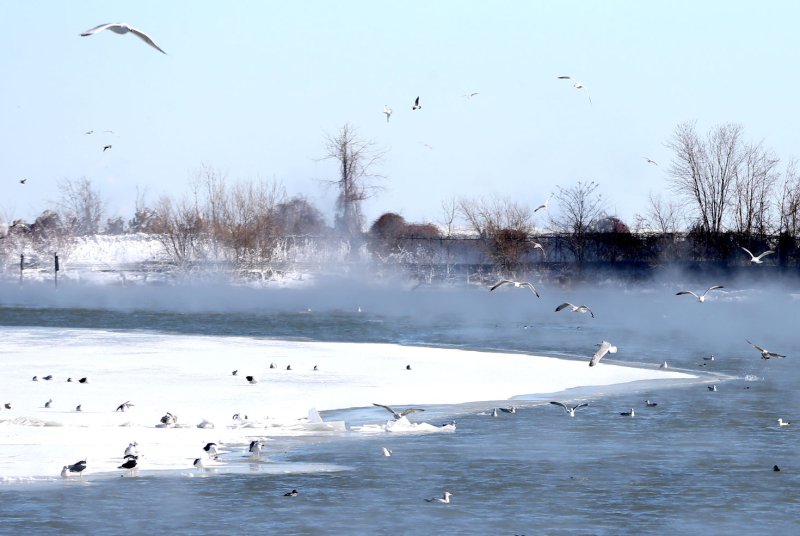
Freeze-thaw events caused by warm spells during winter can increase the risk of drowning. Photo by Aaron Josefczyk/UPI | License Photo
Nov. 18 (UPI) -- Wintertime drownings among children and young adults are on the rise in many parts of the world, and new research suggests climate change and the destabilization of ice in frozen lakes and ponds are to blame.
For the study, published Wednesday in the journal PLOS One, researchers compared temperature and precipitation patterns with the timing of 4,000 drownings in 10 different countries, including Canada, Russia, Finland, Germany, Sweden, and the United States.
The data showed warming winter air temperatures accurately predicted increases in wintertime drownings.
"We used statistical models to relate the winter drownings per capita to mean winter air temperature," lead study author Sapna Sharma told UPI in an email.
RELATED Wintertime ice growth in the Arctic is accelerating, slowing historic decline
"An exponential model was the best fit when analyzing all of the countries and years together, as we found that there were five-fold more winter drownings as mean winter air temperatures approached zero degrees Celsius," said Sharma, a professor in the biology department at York University in Toronto.
The data showed Canada, where many residents use frozen lakes for hunting, fishing, skating and other recreational activities, was home to the highest number of wintertime drownings.
A close examination of the link between weather patterns and the risk of wintertime drownings in the Canadian territories showed drownings were most likely when air temperatures were between negative five and zero degrees Celsius.
RELATED Summers less smoggy now, but winter air hasn't improved
When temperatures began climbing north of zero, researchers found the rate of drownings declines, most likely because ice instability became more obvious to users.
While air temperatures have the greatest influence on ice-on, ice-off, freeze-thaw events and ice thickness, Sharma said rain and heavy snows can also destabilize the ice on lakes and ponds, increasing the risk of wintertime drownings.
The research showed that winters have become milder over the last 30 years, increasing the risk of wintertime drownings in many parts of the world.
RELATED U.S. may see 30-fold rise in extreme heat exposure by 2100
Sharma said the increase in the risk of wintertime drowning is greatest "in regions where ice is used a lot for recreation and subsistence, where winters are warming the fastest, and there aren't strong local regulations letting people know whether the ice is safe to use" -- places like Canada, the United States, Latvia, Estonia and Sweden.
Despite the warming effects of climate change, most places where people use ice for recreation and subsistence remain cold enough to host thick and stable ice throughout the heart of winter. During winter's shoulder months, in December or March, however, the risk of drowning increases.
Even as cold weather persists into the early spring, global warming has increased the odds of warm spells arriving earlier than usual. It's this variability, the mix of cold and warm weather, that can prove dangerous for ice-users.
"A warm spell in the middle of winter weakens the structural integrity of the ice," Sharma said. "Warm temperatures and bright sunny days or rain events will even further decrease the stability of the ice."
Researchers hope policy makers will take note of their findings and take steps to inform citizens about the risks of wintertime drownings.
"Understanding that climate change has had a large influence on ice through later ice-on, earlier ice-off, freeze-thaw events and thinner ice will hopefully help individuals when deciding whether the ice is safe for use," Sharma said. "Winter safety components in swimming lessons for children and teens could help mitigate the risk."
No comments:
Post a Comment